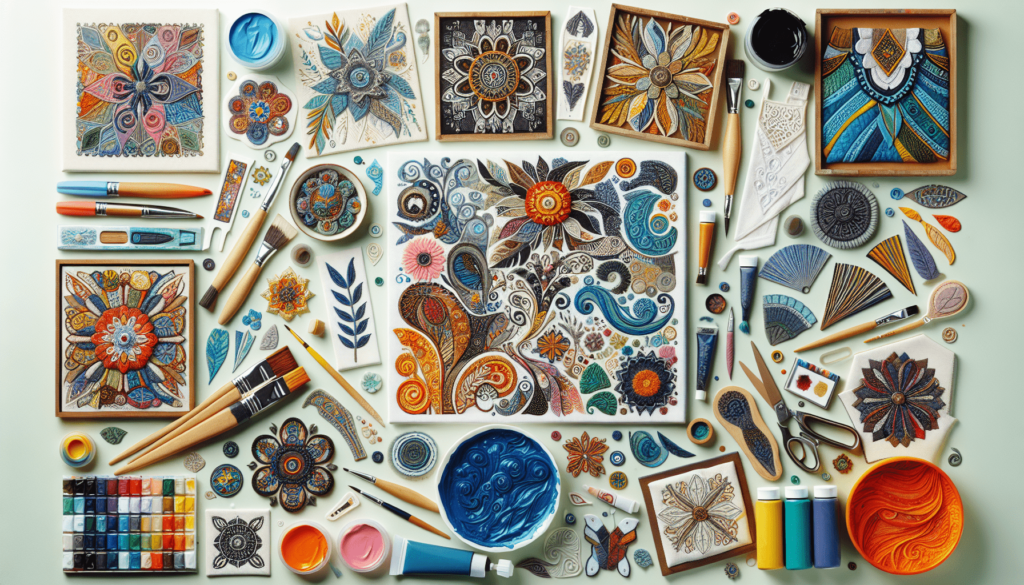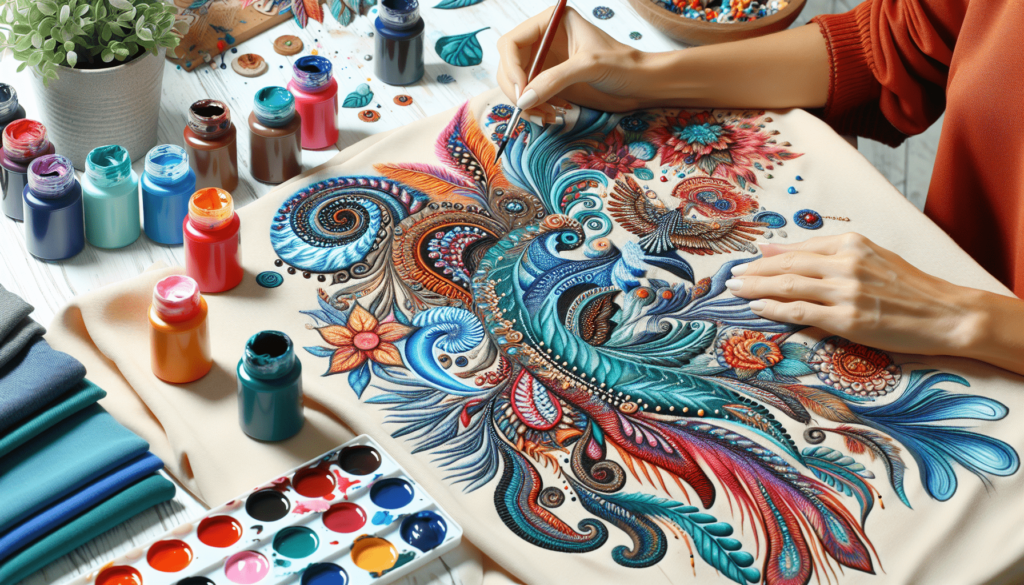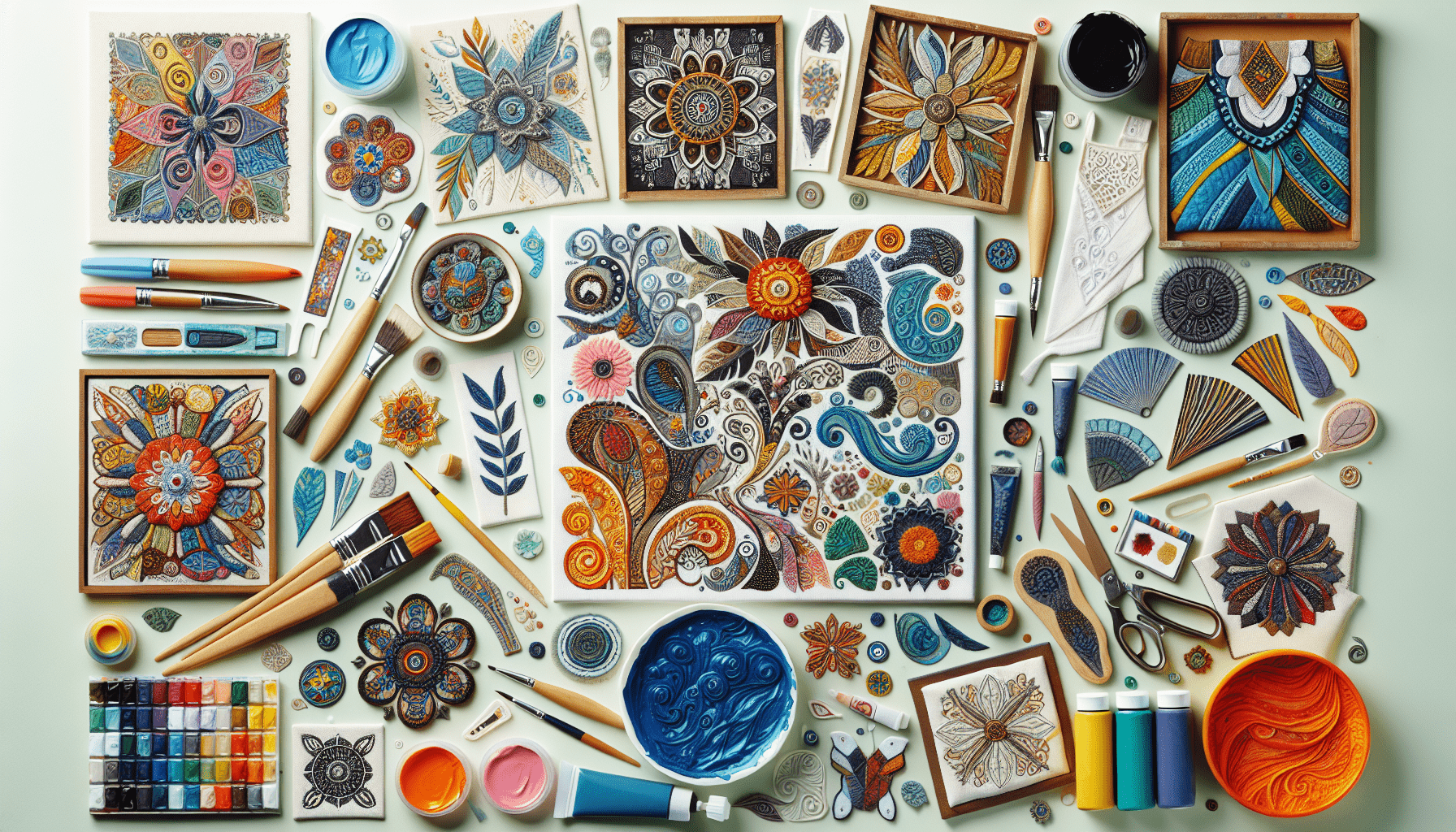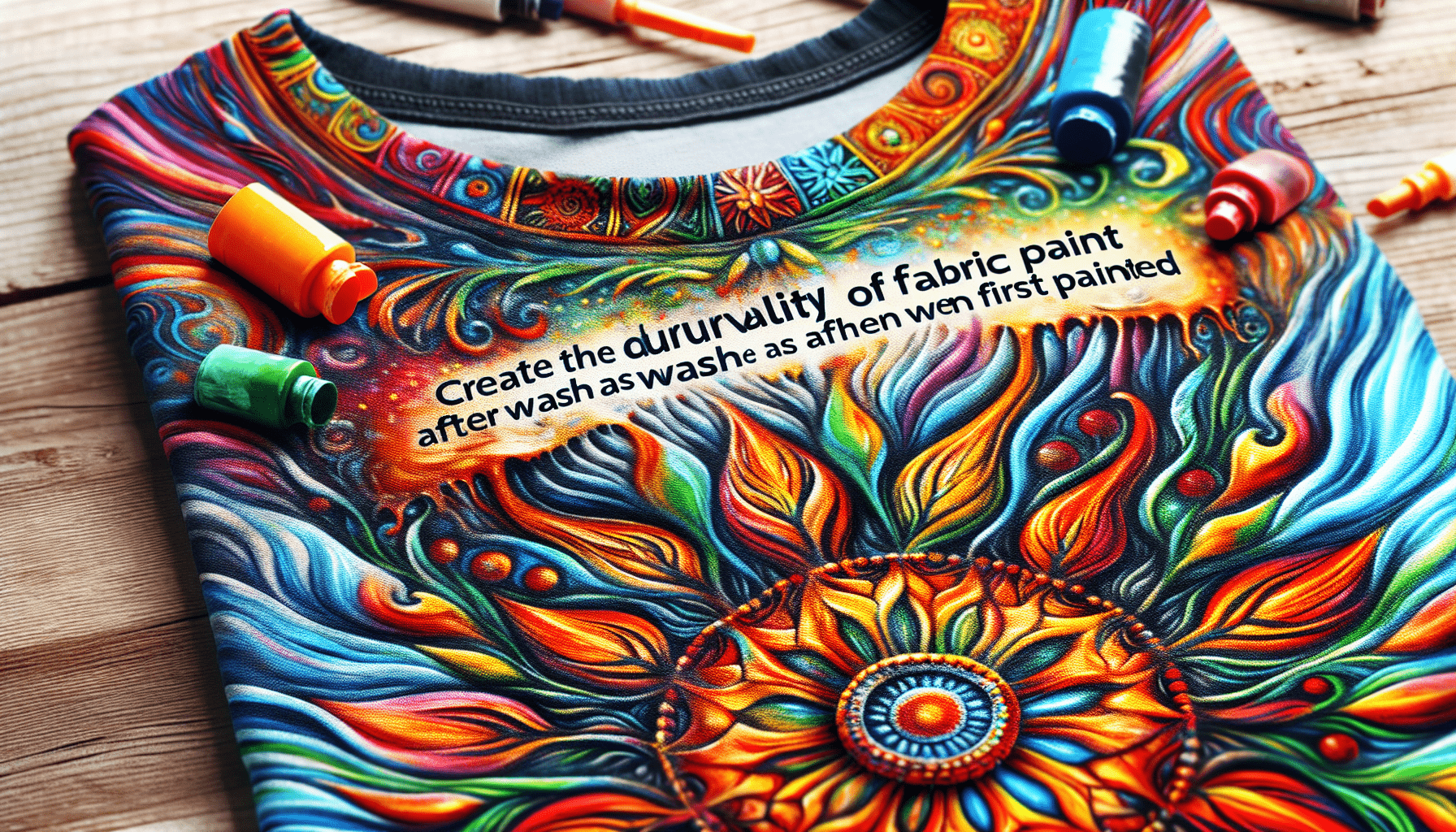Dimensional fabric paint is a versatile and innovative product that has gained popularity in the world of crafting and fabric design. This type of paint, also known as 3D fabric paint, is specially formulated to create textured and raised designs on various types of fabrics. It allows you to add an extra dimension to your fabric creations, making them stand out and come to life. Whether you’re a professional artist or a hobbyist, dimensional fabric paint offers endless possibilities for adding unique and eye-catching designs to your garments, accessories, and home decor items. In this article, we will explore the different applications and techniques of dimensional fabric paint, as well as its benefits and limitations. So, get ready to unleash your creativity and bring your fabric projects to the next level with dimensional fabric paint.
Definition of Dimensional Fabric Paint
Dimensional Fabric Paint, also known as 3D fabric paint, is a type of paint specially designed for use on fabric surfaces. It is a unique medium that allows artists, crafters, and hobbyists to add texture, dimension, and vibrant colors to their fabric-based projects. The paint is formulated with ingredients that give it a three-dimensional quality, allowing it to create raised designs and patterns when applied to fabric.
Description of Dimensional Fabric Paint
Dimensional fabric paint comes in a variety of formulas, each with its own unique characteristics and effects. Most dimensional fabric paints are available in squeeze bottles with fine-tip applicators, which make it easy to control the flow and create detailed designs. The paint is usually thick and viscous, allowing it to hold its shape and create raised lines and textures on the fabric. Once dry, dimensional fabric paint forms a flexible and durable surface that is resistant to cracking and peeling.
Types of Dimensional Fabric Paint
Puffy paint
Puffy paint is a popular type of dimensional fabric paint that creates a raised, textured effect on fabric. It is known for its rich, creamy consistency and its ability to hold its shape when applied. Puffy paint expands and puffs up as it dries, creating a three-dimensional effect that adds depth and dimension to fabric projects. This type of paint is great for adding texture to clothing, accessories, and home decor items.
Glitter paint
Glitter paint is another type of dimensional fabric paint that adds a touch of sparkle and shimmer to fabric surfaces. It contains fine glitter particles suspended in a translucent or colored base, allowing you to create glittery designs and accents on fabric. Glitter paint is perfect for adding a touch of glamour to clothing, bags, and other fabric items.
Slick paint
Slick paint, also known as metallic paint, has a shiny, glossy finish that adds a sleek and stylish look to fabric projects. It is often used to create metallic accents, borders, and details on fabric. Slick paint is available in a range of metallic colors, such as gold, silver, and copper, allowing you to customize your projects with a touch of elegance.
Glow-in-the-dark paint
Glow-in-the-dark paint is a unique type of dimensional fabric paint that adds a fun and whimsical element to fabric projects. It absorbs and stores light during the day and emits a soft, glowing light in the dark. This type of paint is perfect for creating eye-catching designs and patterns on clothing, costumes, and accessories that will glow and stand out in low-light conditions.

Uses of Dimensional Fabric Paint
Dimensional fabric paint offers endless possibilities for creative expression. Here are some of the most common uses for this versatile medium:
Decorating clothing
Dimensional fabric paint is often used to decorate clothing, giving plain t-shirts, sweatshirts, and jeans a personalized and artistic touch. It allows you to create unique designs, patterns, and motifs on fabric, turning ordinary garments into one-of-a-kind creations. Whether you want to add a small detail or cover a large area, dimensional fabric paint is a great way to bring your creative vision to life on fabric.
Customizing accessories
Dimensional fabric paint is also widely used for customizing accessories such as bags, shoes, hats, and scarves. You can add your own personal style to these items by painting on decorative elements, patterns, or even your name or initials. Customizing accessories with dimensional fabric paint not only makes them stand out, but it also allows you to express your individuality and create unique pieces that reflect your personal taste.
Creating fabric art
Dimensional fabric paint can be used to create beautiful fabric art pieces, such as wall hangings, decorative pillows, and fabric collages. By using different colors, textures, and techniques, you can create stunning and visually appealing artworks on fabric. The raised and textured effect of dimensional fabric paint adds depth and interest to your pieces, making them truly unique and eye-catching.
Embellishing home decor items
Dimensional fabric paint is a great tool for embellishing home decor items, such as curtains, tablecloths, and cushions. By adding dimensional designs and patterns to these items, you can instantly transform the look and feel of a room. Whether you prefer a subtle and understated design or a bold and vibrant one, dimensional fabric paint allows you to customize your home decor to suit your personal style and taste.
How to Use Dimensional Fabric Paint
Using dimensional fabric paint is a straightforward process that requires careful preparation and attention to detail. By following these steps, you can achieve professional-looking results on your fabric projects:
Preparation of fabric
Before applying dimensional fabric paint to fabric, it is important to ensure that the fabric is clean and free from any dirt, dust, or oils. Washing the fabric with mild detergent and allowing it to dry thoroughly is recommended. Additionally, if the fabric has a loose weave or is prone to fraying, it is advisable to apply a thin layer of fabric stabilizer or iron-on interfacing to the back of the fabric to prevent the paint from seeping through or causing the fabric to fray.
Choosing the right design
Once the fabric is prepared, it’s time to decide on the design or pattern you want to create with dimensional fabric paint. You can choose to freehand your design directly onto the fabric using a pencil or chalk, or you can create a stencil or use stamps for more precise and consistent designs. Experimenting with different design ideas on paper or fabric swatches beforehand can help you visualize the final result and make any necessary adjustments.
Applying the paint
When applying dimensional fabric paint, it is important to keep a steady hand and use controlled movements to achieve clean lines and even coverage. Squeeze the paint bottle gently and apply the paint directly onto the fabric, following your chosen design or pattern. For raised, three-dimensional effects, apply the paint thicker in some areas and thinner in others. Take caution not to overload the fabric with too much paint, as it may result in smearing or bleeding.
Curing the paint
After applying dimensional fabric paint, it is crucial to allow sufficient time for the paint to dry and cure. The drying time can vary depending on the brand and formula of the paint, as well as the thickness of the application. It is recommended to follow the manufacturer’s instructions for drying times. Once the paint is dry to the touch, it needs to be cured to ensure durability and washability. Cure the paint by either air-drying it for at least 72 hours or by heat-setting it with an iron according to the recommended temperature and time guidelines provided by the manufacturer.

Tips and Techniques for Using Dimensional Fabric Paint
To elevate your dimensional fabric painting skills and create more professional-looking designs, consider these tips and techniques:
Creating dimensional effects
Experiment with different application techniques to create different dimensional effects with your fabric paint. For example, you can use a palette knife or a toothpick to create raised dots and lines, or you can apply the paint with a sponge for a stippled or textured effect. By varying the pressure and angle of application, you can achieve unique textures and patterns that enhance the overall design of your fabric project.
Mixing colors
Dimensional fabric paint can be mixed together to create custom colors and shades. Prior to mixing, ensure that the paints have a similar consistency to avoid clumping or uneven mixing. Start by mixing small amounts of paint to test the color outcome and make adjustments as needed. Remember to keep track of the proportions and colors used for future reference. Mixing colors allows you to expand your color palette and create more intricate and visually interesting designs.
Adding texture
You can enhance the texture and tactile quality of your dimensional fabric paint designs by mixing in additional materials such as sand, glitter, or fabric texture mediums. These additives can be mixed directly into the paint or applied on top of the paint while it is still wet. Experiment with different textures and combinations to create visually striking designs that not only look great but also feel interesting to the touch.
Using stencils and stamps
Stencils and stamps can be valuable tools for creating consistent and intricate designs with dimensional fabric paint. They provide a guide for your paint application and ensure that your designs are clean and precise. Stencils can be created using various materials such as cardboard, plastic, or specialized stencil sheets. Stamps designed for use with fabric paint are available in a wide range of patterns and motifs, allowing you to easily create repetitive designs or add decorative elements to your fabric projects.
Drying and Curing Dimensional Fabric Paint
Ensuring proper drying and curing of your dimensional fabric paint is crucial to achieving long-lasting and durable results.
Air-drying
Air-drying is the most common method of drying dimensional fabric paint. It involves allowing the paint to dry naturally in the air over a period of time. The drying time can vary depending on factors such as the thickness of the paint application, the humidity of the environment, and the specific brand of paint used. It is important to follow the manufacturer’s recommendations for drying times, as premature handling or washing of the fabric can compromise the integrity of the paint.
Heat-setting
Heat-setting dimensional fabric paint is an alternative method that can help speed up the drying process and ensure that the paint adheres securely to the fabric. To heat-set the paint, place a clean cloth or paper towel over the painted fabric and apply heat using an iron set to the appropriate temperature for the specific paint you are using. Follow the manufacturer’s guidelines for recommended heat-setting temperatures and durations, being cautious not to scorch or damage the fabric. Heat-setting is especially useful for projects that require quick completion or when a more resilient and wash-resistant paint finish is desired.
Care and Maintenance of Dimensional Fabric Paint
Proper care and maintenance of dimensional fabric paint can help extend its lifespan and preserve the quality of your fabric projects.
Machine washable or hand wash only
Not all dimensional fabric paints are machine washable. It is important to check the instructions provided by the manufacturer to determine if the paint can be safely washed in a washing machine. If the paint is not machine washable, it is advisable to hand wash the fabric using a mild detergent and cold water to ensure that the paint remains intact and vibrant. Always follow the manufacturer’s recommendations for washing and drying instructions to prevent any damage to the paint or fabric.
Avoiding direct ironing
Directly ironing over dimensional fabric paint can cause the paint to smudge, melt, or lose its three-dimensional qualities. To protect the paint when ironing, place a clean cloth or piece of parchment paper between the painted fabric and the iron. Iron the fabric using a low to medium heat setting and avoid applying excessive pressure to prevent any unwanted smearing or flattening of the paint.
Storing the paint properly
Proper storage of dimensional fabric paint helps maintain its shelf life and prevents the paint from drying out or becoming unusable. Store the paint bottles in a cool, dry place where they are not exposed to extreme temperatures or direct sunlight. Ensure that the caps are securely tightened after each use to prevent air from entering the bottle, as this can cause the paint to dry out or thicken. If the paint becomes too thick or difficult to dispense, add a small amount of water or fabric medium and mix thoroughly to restore its original consistency.
Safety Precautions when Using Dimensional Fabric Paint
While dimensional fabric paint is generally safe to use, it is important to take certain safety precautions to protect yourself and ensure a safe working environment.
Ventilation
When using dimensional fabric paint, ensure that you are working in a well-ventilated area. Open windows or use fans to increase air circulation, especially if you are working with a large amount of paint or using it for an extended period. Proper ventilation helps minimize exposure to paint fumes and ensures a healthier breathing environment.
Protection for skin and clothing
To prevent any potential allergic reactions or skin irritations, it is recommended to wear gloves when using dimensional fabric paint. The paint can also stain clothing, so it is advisable to wear protective clothing or an apron. In case of accidental contact with the skin or eyes, immediately rinse with plenty of water and seek medical attention if necessary.
Proper disposal of materials
Dispose of any unused or expired dimensional fabric paint according to local regulations and guidelines. Avoid pouring the paint down the drain or disposing of it in the regular household waste. Check with your local waste management facilities for proper disposal methods, as some places may have specific recycling programs for paint or designated drop-off locations for hazardous materials.
Frequently Asked Questions about Dimensional Fabric Paint
How long does it take for the paint to dry?
The drying time of dimensional fabric paint can vary depending on several factors, including the brand, thickness of application, humidity levels, and environmental conditions. Generally, it takes anywhere from a few hours to 24 hours for the paint to dry to the touch. It is important to allow the paint sufficient time to dry before handling or moving the fabric to prevent smudging or smearing.
Can dimensional fabric paint be used on other surfaces?
While dimensional fabric paint is primarily designed for use on fabric surfaces, it can also be used on other porous surfaces such as wood, paper, and cardboard. However, keep in mind that the paint may behave differently on these surfaces and may require additional preparation or sealing to ensure proper adhesion and longevity.
Is dimensional fabric paint permanent on fabric?
Dimensional fabric paint is designed to be permanent on fabric surfaces once properly dried and cured. Once cured, the paint forms a flexible and durable surface that is resistant to cracking, peeling, and fading. However, certain factors such as excessive washing, harsh detergents, or exposure to direct sunlight over time may cause the paint to gradually fade or deteriorate.
Can dimensional fabric paint be washed?
Most dimensional fabric paints are washing machine friendly, but it is important to read the manufacturer’s instructions to confirm whether the specific paint you are using is machine washable. Some paints may require hand washing or may have specific temperature and washing instructions. It is advisable to turn the fabric inside out and use a gentle cycle when machine washing painted fabric to minimize wear and maintain the integrity of the paint.
Does dimensional fabric paint crack or peel?
When applied and cured correctly, dimensional fabric paint is resistant to cracking and peeling. However, if the paint layer is too thick or the fabric undergoes excessive stretching or folding, it may cause the paint to crack or peel over time. To minimize the risk of cracking or peeling, ensure that the paint is applied evenly and without any excess thickness. Additionally, avoid using dimensional fabric paint on fabrics with a high degree of stretch or those subjected to constant friction, as these factors can increase the likelihood of cracking or peeling.
Popular Brands of Dimensional Fabric Paint
There are several popular brands that offer a wide range of dimensional fabric paints to choose from. Here are a few notable brands:
Tulip
Tulip is a well-known and respected brand in the realm of dimensional fabric paint. They offer a diverse range of colors, finishes, and formulas, including puffy, glitter, slick, and glow-in-the-dark options. Tulip paints are known for their high-quality pigments, excellent adhesion, and durability on fabric surfaces.
DecoArt
DecoArt is another popular brand that offers a variety of dimensional fabric paints in vibrant colors and finishes. Their paints are known for their excellent coverage, smooth consistency, and ability to create intricate designs with ease. DecoArt dimensional fabric paints are suitable for both beginners and experienced artists alike.
Crafter’s Acrylic
Crafter’s Acrylic is a brand that provides an extensive range of dimensional fabric paints at an affordable price point. Their paints offer good color saturation, quick drying times, and excellent adhesion to fabric surfaces. Crafter’s Acrylic is a popular choice for those looking to experiment with dimensional fabric painting without breaking the bank.
Pebeo
Pebeo is a reputable brand known for its high-quality art supplies, including dimensional fabric paint. Their fabric paints offer vibrant colors, easy application, and excellent adhesion to various fabric types. Pebeo paints are favored by professionals and artists who seek superior quality and longevity in their fabric projects.



